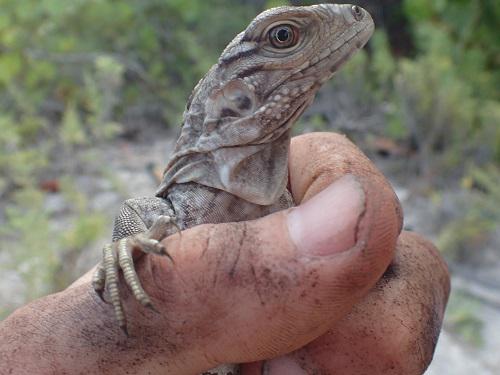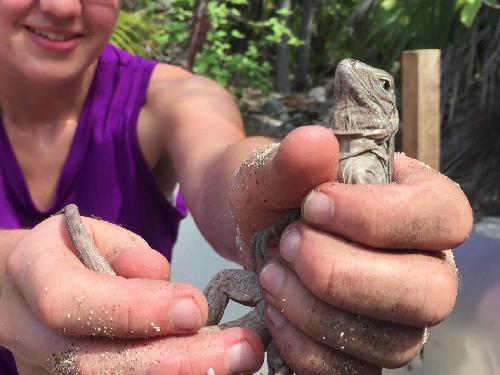Jeanette Moss
Other projects
7 Jul 2016
Recent Trends in Recruitment and Environmental Limiting Factors for the Sister Islands Rock Iguana, Cyclura nubila caymanensis
21 Aug 2017
Natal Ecology of the Sister Islands Rock Iguana (SIRI): Radio-Tracking and Long-Term Monitoring of Juveniles on Little Cayman and Cayman Brac
This project aims to evaluate the population recruitment values of major communal nest sites on Little Cayman’s coastline by assessing clutch densities with respect to existing data on nesting females. The project will also generate a cross-generational I.D. library (including fitness and genetic measurements), which can be enlisted to trace survivorship and dispersal and to investigate symptoms of inbreeding depression.

The Sister Isles Rock Iguana (SIRI), Cyclura nubila caymanensis, is an IUCN-listed critically endangered species (<900 mature individuals) endemic to the islands of Little Cayman (LC) and Cayman Brac (CB). Human impacts on native fauna in the Caymans (expanding development, introduction of feral mammalian predators, and increased road traffic) have a relatively recent history, with major changes occurring over the last several decades. Since SIRI is a long-lived species (up to 70 years) that is most vulnerable in its early stages, the full impact of human development on the population may not yet be realized. Further, qualitative observations from the 1970s and 80s suggest that SIRI historically occupied a much larger range and has since retracted to coastal fringes. It is crucial, therefore, to gain a clearer picture of recent trends by investigating survivorship, habitat use, and population dynamics at multiple age classes within the population.

The immediate outcomes of this two-stage investigation will be to generate new and important data on recruitment at communal nest sites and to generate a large I.D. library to monitor long-term survivorship and dispersal. This follows a corresponding field season in late Spring during which nesting females were monitored and sampled. Study sites have been selected from coastal areas on LC to maximize sampling success, since LC has the larger estimated SIRI population of the two islands (~800 mature individuals) and its coastline has already been mapped. Genetic sampling will constitute an additional component of the study, expected to supplement any new ecological insights from this research. Specifically, progressive declines in survivorship across age classes may correlate with genetic symptoms of inbreeding depression, which could warrant new captive breeding or translocation programs. Importantly, determining whether the communal nest sites sampled broadly or narrowly serve the island population (both in terms of numbers and genetic variation) will be important in elucidating the sites’ respective conservation values.
My work in 2015 will represent the first phase of a multi-year PhD thesis, which is expected to delve into many aspects of population dynamics and nesting ecology. In subsequent field seasons, I plan to investigate SIRI’s dispersal patterns by tracking PIT-tagged iguanas via radio telemetry and “conservation drone” technology. By collaborating closely with Caymanian partners, including the Department of Environment and National Trust, our research group will strive to instill reliable and consistent protocols in local institutions and cultivate local interest in wildlife protection.